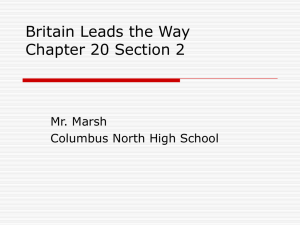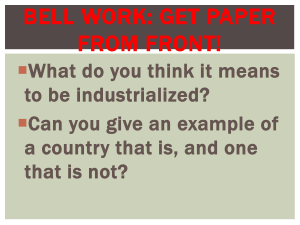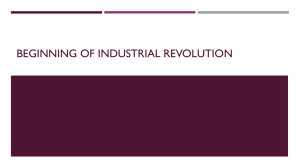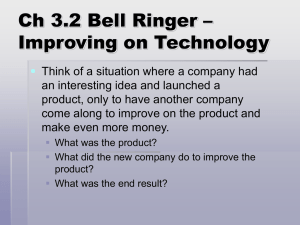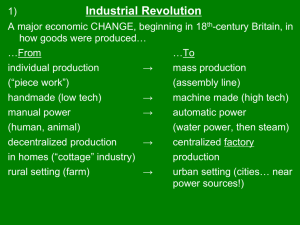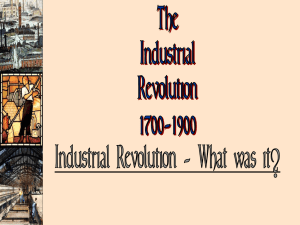Industrial Revolution Begins: Agricultural Changes
advertisement
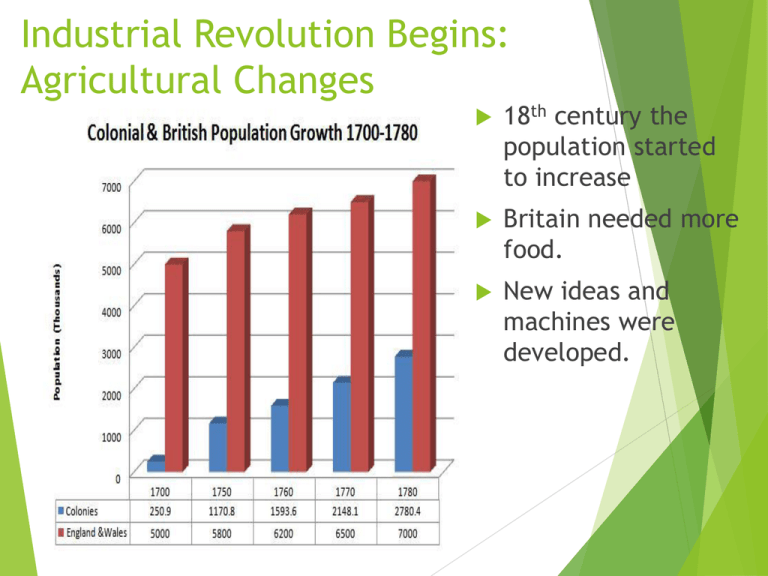
Industrial Revolution Begins: Agricultural Changes 18th century the population started to increase Britain needed more food. New ideas and machines were developed. Agricultural Revolution Enclosure Movement- Landowners fenced off their property creating bigger farms that were more efficient. These landowners were able to practice better farming methods and produce more food with less labor. People were forced to leave the farms and head to the cities, giving you a new labor force. Crop Rotation- using soil over and over to grow crops takes out all the nutrients from the soil. Charles Townsend found that planting turnips replenished the soil, so he began to rotate his crops, 1/4 turnips, 3/4 the other produce. Breeding Animals: Selective Breeding Robert Bakewell began to breed big animals with big animals. By doing this it produced bigger stronger animals that had more meat. More meat= feed more people=healthier people= Population Growth Seed Drill- Jethro Tull developed a seed drill that planted seeds directly into the soil. This enabled farmers to plant straight rows so they could grow more and not waste seeds. This increased overall production of agricultural goods. Less people to make more food=Healthier people= Population growth= Larger demand for manufactured goods and more workers. Implications of the Agricultural Revolution Unemployment People lost land People moved to towns (urban areas) In 1801, 69% of the population of Britain lived in rural areas. In 1881, it declined to 32%, people moved to urban areas. CAPITAL: Many British people were wealthy; they had the money to invest. NATURAL RESOURCES: G.B. had great waterways making it easy to transport goods and use water as a supply of power. It also had huge supplies of coal and iron. LABOR SUPPLY: A.R. led to population growth, which created labor and a market. COLONIES: G.B. had established colonies around the world that gave them a great place to get natural resources. ENTREPRENEURS brought together capital, labor and new inventions. Britain has all the pieces to begin manufacturing: Labor Natural Resources Capital What are they missing to make this all work? Machinery: Inventions Needed Inventions: Changes in Textile Industry – each invention led to the next Flying shuttle Spinning Jenny Water Frame Spinning Mule Power Loom Moves from domestic system to factory system Domestic system: textile industry in individual homes Factory system: textile industry moves to FACTORIES (large machines needed space) Cotton Frame Cotton Gin Improvements in Transportation Steam Engine Watt: Faster and efficient For machines, boats, and later: trains Water Transportation Steam Boats Canals Road Transportation Road improvements for drainage Private companies build roads and operated for profit (tolls) Railway Age Begins Steam engine on wheels Railroads revolutionized life in Britain 1. Spurred industrial growth 2. Created new jobs 3. Agriculture and Fishing industries grew 4. Country people could take city jobs and city people could travel to country

